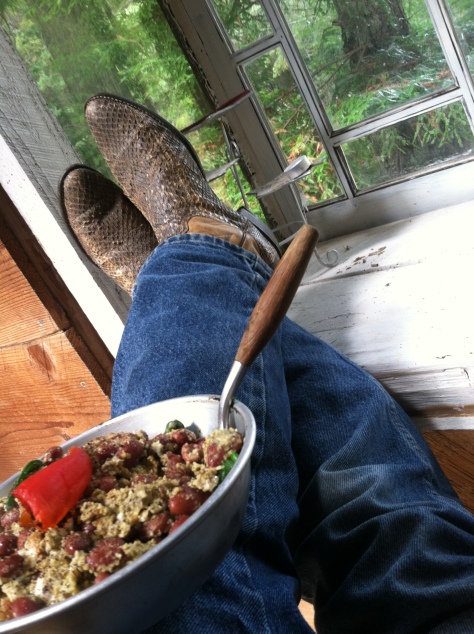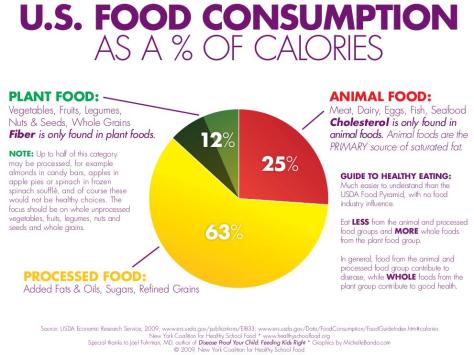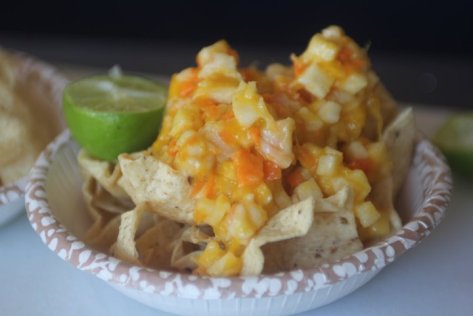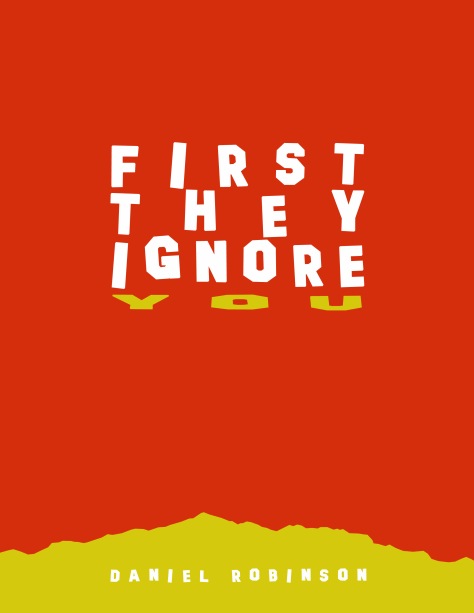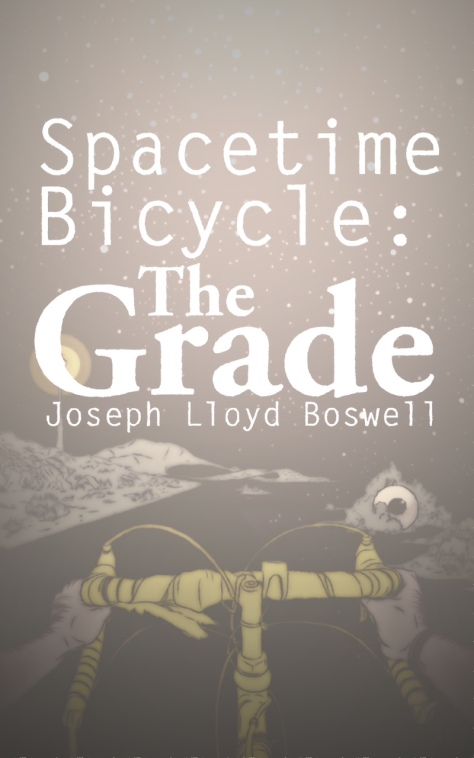Houston, TX. June, 2013.

“You gotta know where your food is gonna go before you even start. Some folks wanna plant vegetable gardens just to look pretty. No, we’re growin’ food here!” We laughed, I knew we’d get along. Eating is the best part of vegetable gardening, and often the most forgotten piece of the puzzle. A vegetable garden is not a success until it lands on the plate. I saw how this basic passion for homegrown food drove the effective yet light hearted individual I had the pleasure of spending a day with.
One day at Wabash (organic feed and seed store in downtown Houston), a smiling man walked up to the counter with a handful of thirty plus different seed packets. I see all kinds of customers at Wabash and when somebody purchases more than a backyard garden’s worth of seeds I begin to wonder: “Are they planting a small farm? Where in Houston has the space for all these seeds? Are they preparing for the apocalypse?” I inquired “I’ve seen you in here before, I gotta know, where are all these seeds going? You must have a hell of a farm.”
The man laughed, “Nope, I got gardens. all over Houston!” I made a puzzled face. “Yeah man, schools, parks, where ever I can.”
“Oh are you with a non-profit group or something?”
“No I just fit in where ever they let me, here’s my card.”
A few weeks later I rode my bike to meet with Kelvin and his associate, Todd, for a garden tour. The first stop was Booker T. Washington High School. The ladies at the front desk remembered Kelvin’s last visit, “Mmhm, I’m still thinking about those greens you cooked up, and that Swiss chard.” As we made our way to the site, the school staff all greeted their favorite gardener in the hallways. Kelvin whispered to me “You gotta feed ‘em. See how she was talkin’ about that cook-out like it was yesterday? That was three weeks ago. Gotta feed ‘em. We just did a class at a preschool nearby and you KNOW we started with a cooking demo. I think every gardening class should start with a cooking demo.”

The Booker T. garden was in an otherwise featureless atrium at the center of campus. The racquetball-court-sized rectangle surrounded by brick walls was now filled with rows of beets, lettuce, carrots, a banana tree, and dormant okra bushes. It was sufficient crop for a few classrooms worth of salads. “We put this one in a year ago, a couple clubs take care of it and snack on it. They’re also doing a little experiment to see how the regular dirt compares to fertilized dirt.”
“This is the fertilized side, huh?” I pointed to the obvious choice.
“Actually, we forgot to fertilize any of it. This side just knew it was gonna get fertilized so it grew better.” He laughed and clarified, “look at where the sun is at, it was fun watching the kids figure that one out,” I noticed the shadow cast up the shorter side of the garden, “The garden’s full of learning opportunities. Gotta keep your eyes open for resources, too.” One of the teachers had brought in hay from her horse barn to lay out as weed prevention. He pointed out where they were installing an apparatus to catch the condensation from the AC units for some extra drip for the garden.
We went on to the next stop driving through Independence Heights. “Did you know this was the first black community incorporated as a city in the State of Texas? Lots of history here. I’ma show you this one we did recently with practically nothing.”
“How long have you been doing this anyways?”
“I started about 15 years ago, Joe from Organic Outpost got me into it, and I been in it ever since.”
We pulled up to a small empty corner lot in a dilapidated neighborhood where there grew a thriving garden of greens. I pulled some of the spinach and continued snacking. I snacked all day during my tour with Kelvin.
“You see this is a food desert, ain’t hardly a vegetable for miles at the stores nearby, so we put this in here. The lady gave us the lot, we tilled up some dirt and set seeds. Look at the ground, full of rocks and trash and stuff, but it’s growin’ aint it?” It is. “And look at this compost,” he walked me over to the huge heap. “You smell anything? You see any pests running around?”
“No.”
“See man, that’s all you gotta do, do it how nature does it and it’ll work – that’s how George Washington Carver came up with all those ideas. And all these good scraps come from that produce factory down the street, they don’t even sell in this neighborhood, but at least they give us compost. Nothin’ goes to waste.” He picked out some orange seeds from the pile and looked at Todd, “we’re gonna have to plant these at that preschool.”
Kelvin, and many of the best gardeners I’ve met, are pathologically resourceful. During the day’s tour we stopped three times to fill Kelvin’s trailer with discarded yard waste from curb sides. A home owner waved out her front door, “thank you sweetie.” “No problem ma’am.”
We rode by a nursing home with an open acre adjacent, host only to a couple of trees. Todd, who had thus far remained humbly quiet became excited and fired up. “Man, look at that lot, right next to the old folks home. That’s a farm right there! Lots of potential.” Kelvin concurred. I began to understand what a day in the life of Kelvin and Todd was like. Work, improvise, teach, eat, share, and embrace your community. I joked with Todd, “so you’re like a freelance sometimes professional mostly volunteer community gardener.” Todd laughed, “Yeah that’s about right, freelance volunteer gardener.”

I continued to see the community how Kelvin saw it, we visited his composting sites and other gardens, some thrived, and some were in need of help, all were a learning experience. “Ain’t no right way to do it. There are so many ways to make a good garden you just gotta figure out the way for you.”
The first time I had spoke with Kelvin I inquired about who his partners and colleagues were. His mode of operations was apparent. “We gotta share everything, this knowledge is for everybody, this ain’t about competition and all that, we try to work with everyone.” I appreciated the sentiment, it’s what keeps me happy at Wabash. Our employees give out information for free, their number 1 goal being a happier more knowledgeable customer, regardless of what they walk out of the store with.
One thing Kelvin continuously mentioned was “I need to get me a tractor!” He’d say this every time we stared at a giant heap of compost, seeing hours of shovel labor. In such a connected community I imagined how many people would benefit from Kelvin on a tractor. What if each backyard garden had surplus of their specialty crop? Neighborhood markets could thrive, the results would be tasty. We really could be a city that provided healthy food for our population right from the ground beneath our feet.
A healthy, sustainable future is quite the feat. With all of the infrastructure and economy that supports empty calories and lazy food, there is so much work and so many pieces to the puzzle to be in place for an organic homegrown community at any level. I get stressed thinking about it. Kelvin reminded me, “Don’t worry about the end result. Just do your part, and it will all work out.” The sentiment brought me peace, it’s something I have to remind myself every day.
When Kelvin dropped off my bike and I that afternoon, he asked “So what did you get out of all this?” I thought for a moment and struck his excitement with my answer. “Keep it simple.” “HaHa! You hit the nail on the head, got it right in with one shot!”
Kelvin is a freelance gardener who works with churches, school, recovery centers, and anywhere that will help the neighborhood. For information about Kelvin’s projects, or to let him borrow your tractor, please contact:
Kelvin Williams
KW64@live.com
and to learn more of Wabash, Houston’s organic gardening headquarters, please visit wabashfeed.com

